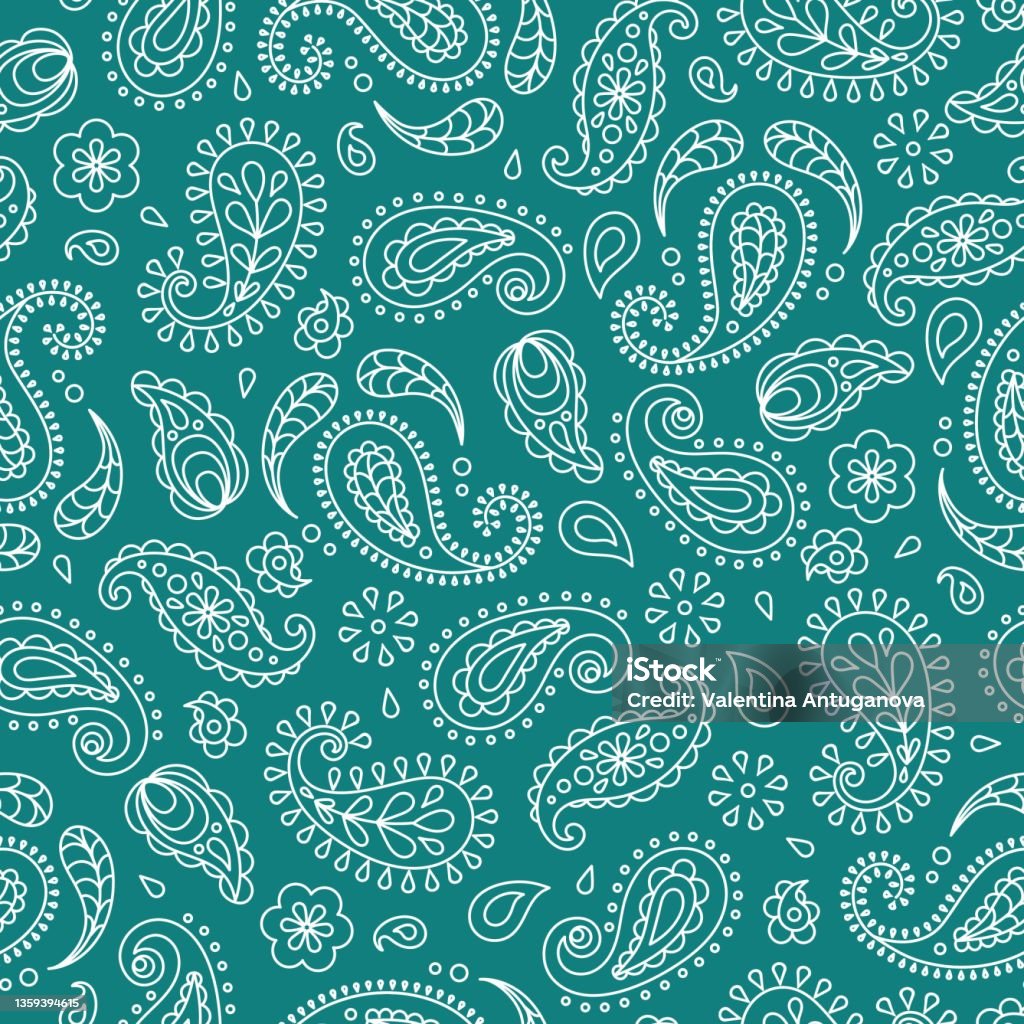From Teardrops to Trends: The Evolution of Paisley Patterns
Key Takeaways
- Rich History: Paisley originated in Persia, with a history spanning ancient civilizations and cultures.
- Cultural Fusion: The pattern seamlessly blends into various cultures, from European aristocracy to counterculture movements.
- Artistic Craftsmanship: Traditional techniques and modern innovations converge to create intricate paisley designs.
- Fashion Evolution: From regal shawls to contemporary streetwear, paisley has maintained its relevance in the ever-changing fashion landscape.
- Enduring Legacy: Paisley’s symbolism, sustainability, and ability to embrace diversity contribute to its enduring legacy in the world of design and fashion.
I. Introduction
Paisley, a distinctive and timeless pattern, has woven its way into the fabric of fashion, art, and culture over centuries. Named after the Scottish town of Paisley, this teardrop-shaped motif holds a rich history and a unique aesthetic appeal. Part 1 delves into the origins of the paisley pattern, tracing its journey from ancient roots to its prominence in contemporary design.
II. Unveiling the Elegance of Paisley Patterns
A Glimpse into History
The roots of paisley can be traced back to ancient civilizations, notably in Persia (modern-day Iran) during the Sassanid Dynasty (224–651 AD). Initially known as “boteh” or “buta,” this motif found its way into textile designs, embodying intricate craftsmanship and symbolic meanings. As the pattern traversed through different cultures and eras, it evolved into the beloved paisley pattern recognized today.
From its early presence in Persian textiles, the paisley pattern made its mark in India, where skilled artisans embraced it in their intricate shawls and fabrics. The British East India Company played a pivotal role in introducing paisley to Europe during the 17th century, setting the stage for its global popularity.
The Teardrop’s Tale
The hallmark of paisley lies in its teardrop shape, often resembling a droplet or a twisted half-leaf. This unique form has garnered diverse interpretations across various cultures. Some view it as a symbol of fertility and abundance, while others see it as a representation of life and eternity. The adaptability of paisley in conveying different meanings has contributed to its widespread adoption and enduring allure.
As we embark on this journey through the intricacies of paisley, it’s essential to appreciate the artistry and cultural significance woven into every curve and swirl of this timeless pattern.
III. Paisley Across Cultures
Paisley’s journey transcends borders, seamlessly blending into the cultural tapestry of diverse societies. Part 2 explores how this pattern traversed continents, leaving an indelible mark on fashion, art, and beyond.
The European Renaissance
The paisley pattern encountered a resurgence during the European Renaissance, capturing the imaginations of artists and designers. As trade routes expanded, luxurious shawls adorned with paisley motifs became coveted items in European high society. The intricate designs were embraced by fashion-forward individuals, marking the pattern’s ascent into the heart of Western aesthetics.
Far East Inspirations
In the Far East, particularly in China and Japan, paisley found a unique fusion with traditional motifs. The delicate balance between the ornate paisley pattern and the subtlety of Eastern design principles resulted in stunning creations that bridged cultural divides. From silk garments to porcelain art, paisley became a symbol of cross-cultural appreciation and artistic synthesis.
American Influence
Paisley made its way to the Americas, evolving with each cultural intersection. In the United States, the pattern became synonymous with counterculture fashion in the 1960s, adorning clothing and accessories as a symbol of rebellion and individuality. This shift marked a departure from its aristocratic origins, emphasizing its adaptability to different social movements and expressions.
Contemporary Fusion
In the 21st century, designers continue to draw inspiration from paisley, seamlessly integrating it into modern aesthetics. From haute couture runways to street fashion, the paisley pattern persists as a versatile and timeless element. Its global journey is a testament to its enduring allure and ability to transcend cultural boundaries.
As we explore paisley’s expansive reach, it becomes clear that this pattern’s universal appeal lies in its ability to seamlessly integrate with diverse cultural narratives.
IV. The Artistry Behind Paisley Patterns
Paisley patterns are a testament to the artistry and craftsmanship embedded in textile design. In Part 3, we unravel the intricate techniques and creative processes that bring this timeless motif to life.
Traditional Textile Techniques
The creation of paisley involves a blend of traditional textile techniques passed down through generations. Artisans meticulously employ methods such as hand embroidery, block printing, and jacquard weaving to ensure the precision and beauty of each paisley motif. This commitment to craftsmanship enhances the pattern’s aesthetic appeal and elevates it to an art form.
Color Symphony
One of the defining features of paisley patterns is the vibrant and diverse color palette employed in their creation. From earthy tones inspired by nature to bold and bright hues that catch the eye, the color choices contribute to the emotional resonance and visual impact of paisley designs. The careful selection of colors reflects the depth of artistic expression within the pattern, making each piece a unique work of art.
Modern Innovations
While rooted in tradition, paisley patterns have evolved with modern innovations. Contemporary designers leverage technology to experiment with new materials, techniques, and applications. Digital printing and computer-aided design have expanded the possibilities, allowing for intricate detailing and customization. This marriage of tradition and innovation ensures the continued relevance of paisley in the ever-changing landscape of design.
The Human Touch
Despite technological advancements, the human touch remains crucial in paisley craftsmanship. Artisans invest time, skill, and passion into each piece, creating a connection between the creator and the wearer. This personal touch contributes to the emotional value of paisley-patterned items, fostering a sense of appreciation for the artistry behind the motif.
V. Paisley in Fashion Through the Ages
Paisley patterns have graced the world of fashion for centuries, undergoing transformations that reflect the ever-evolving tastes of society. Part 4 explores the dynamic journey of paisley through different eras, from its aristocratic origins to its contemporary presence on runways and in streetwear.
Regal Elegance in the 18th and 19th Centuries
During the 18th and 19th centuries, paisley adorned the luxurious shawls of European aristocracy. Its intricate designs and association with wealth and refinement made it a symbol of regal elegance. The paisley pattern became a coveted accessory, elevating fashion to an art form and influencing trends that resonated far beyond the elite circles.
The Bohemian Revival of the 1960s
In the 1960s, paisley experienced a radical shift in perception. No longer confined to the exclusive realm of high society, the pattern became a symbol of counterculture fashion. The bohemian movement embraced paisley for its psychedelic and free-spirited connotations, marking a departure from its aristocratic past. This era laid the foundation for paisley’s versatility and its ability to adapt to the changing tides of fashion.
High Fashion Renaissance
Paisley underwent a resurgence in high fashion during the latter part of the 20th century and into the 21st century. Esteemed designers incorporated the pattern into their collections, celebrating its timeless appeal. From haute couture runways to ready-to-wear lines, paisley graced garments, accessories, and even footwear, proving its enduring status as a fashion icon.
Street Style and Everyday Chic
In recent years, paisley has seamlessly integrated into everyday fashion, finding a place in streetwear and casual attire. Its versatility allows it to be both a statement piece and a subtle addition to an ensemble. The paisley pattern continues to captivate fashion enthusiasts of all ages, bridging the gap between historical elegance and contemporary style.
VI. Paisley’s Enduring Legacy
As we conclude our exploration of the paisley pattern, Part 5 delves into its enduring legacy and the factors that have contributed to its sustained popularity across centuries.
Symbolism in Everyday Life
Paisley’s journey is not just a visual spectacle but also a narrative of symbolism. Beyond its aesthetic appeal, the pattern carries historical, cultural, and personal meanings. From representing prosperity to embracing rebellion, paisley resonates with individuals on a deeper level, making it more than just a fashion statement. Its symbolic versatility ensures that it remains relevant in various contexts and cultures.
Sustainable Style
In the contemporary era, where sustainability is at the forefront of consumer consciousness, paisley has found a place as a sustainable and timeless choice. Its enduring popularity means that paisley-patterned items are less likely to succumb to fleeting trends, promoting a more sustainable approach to fashion. Additionally, the craftsmanship involved in creating paisley often aligns with ethical practices, further contributing to its appeal in the realm of conscious consumerism.
The Influence on Art and Design
Paisley has transcended its origins in textiles to become a muse for artists and designers across various mediums. From paintings to graphic design, the paisley pattern has inspired a plethora of creative expressions. Its adaptability and distinct form make it a captivating subject for those seeking to infuse their work with a touch of tradition and sophistication.
Embracing Diversity
Paisley’s ability to weave through different cultures and eras is a testament to its universal charm. As it continues to be embraced globally, paisley bridges gaps and fosters cultural appreciation. In an increasingly interconnected world, the pattern stands as a symbol of unity through diversity, inviting individuals from various backgrounds to connect through a shared appreciation for its beauty and history.
VI. Conclusion
In conclusion, paisley emerges not just as a pattern but as a timeless symbol of tradition, adaptability, and unity. From regal elegance to counterculture rebellion, paisley has weathered changing tides, leaving an indelible mark on fashion, art, and culture. Its enduring legacy is a testament to its universal appeal, sustainable style, and profound influence on diverse artistic expressions. As paisley persists in shaping the world of design, fashion, and culture, its allure remains as strong as ever.


